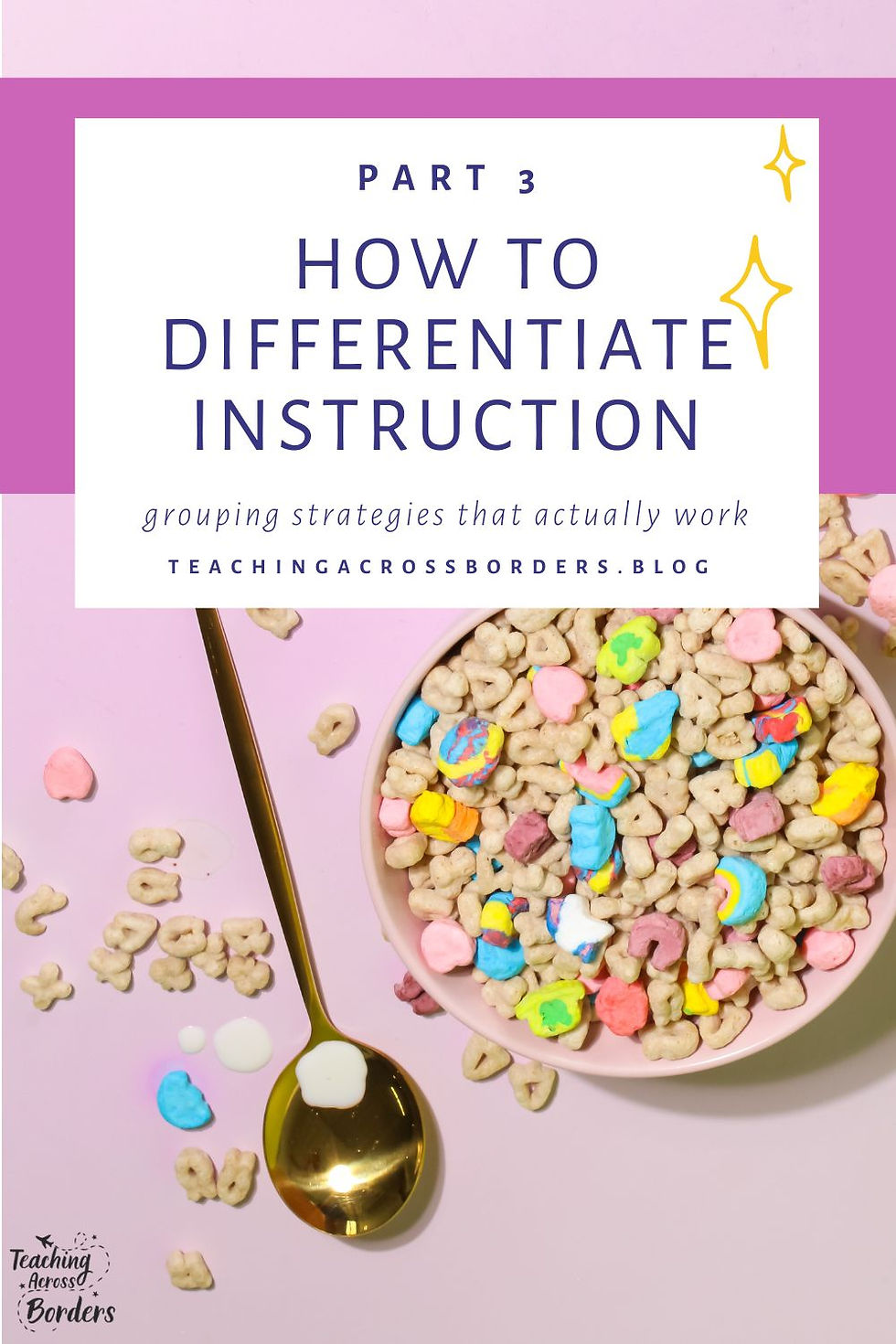Differentiation Part 1: How to Differentiate Instruction Without Overwhelming Prep Work
- Laura Swallow

- Feb 8
- 4 min read

Hey there, fellow teacher!
I get it—differentiating instruction can feel like an impossible juggling act when you're already stretched thin. Between lesson planning, grading, and managing a bustling classroom, the last thing you need is more prep work. But here’s the good news: you can create a differentiated classroom that meets all your students’ needs without spending countless extra hours preparing materials.
In this post, I’m sharing practical, time-saving strategies to help you differentiate instruction effectively—without the overwhelm. These are classroom-tested tips that work for busy teachers like you who want to engage every student without sacrificing precious prep time.
Why Differentiate Instruction?
Differentiated instruction is all about meeting each student where they are. Whether it’s through offering different types of activities, varying the level of challenge, or using multiple modes of instruction, differentiation helps ensure that every student gets the support they need to succeed.
But here’s the catch: traditional differentiation can often mean extra work—more lesson plans, more materials, and more time spent preparing. The goal is to strike a balance so that your teaching remains effective and engaging without adding extra stress.
Time-Saving Strategies for Differentiation
1. Leverage Ready-to-Use Resources
One of the easiest ways to save time is to invest in ready-to-use resources that are designed with differentiation in mind. Look for materials that are adaptable and come with clear instructions so you can modify them on the fly. For example, my Graphic Organizers Bundle is a favorite because it offers a variety of templates that can be used across subjects and easily adjusted for different learning levels.
2. Plan Flexible Grouping
Instead of trying to create entirely separate lesson plans for every ability level, plan for flexible grouping. Use a quick diagnostic tool or exit ticket to gauge student understanding, then group students for activities based on their needs. This way, you’re not reinventing the wheel—you’re simply rearranging your existing plan into small, targeted groups.
3. Incorporate Choice Boards
Choice boards empower students by offering a menu of activity options that cater to different learning styles and levels. They’re a fantastic way to differentiate without creating multiple lesson versions. They’re designed to be low-prep and easily integrated into any lesson.
4. Use Tiered Assignments
Tiered assignments allow you to present the same core concept at varying levels of difficulty. Create a single assignment with multiple “tiers” that challenge students according to their readiness. This approach not only saves you time but also ensures that each student is working at an appropriate level. Remember, the key is to have one set of instructions with clear pathways, so you don’t have to craft entirely separate tasks for each group.

5. Employ Technology Tools
Digital tools can be your best friend when it comes to differentiation. Platforms like Google Classroom allow you to assign different tasks to different groups without extra paperwork. Interactive tools such as Kahoot, Blooket, or Quizizz let you run quick formative assessments, which can inform how you group and tailor your instruction. Plus, many tech tools have ready-made templates and activities that require minimal setup!
6. Utilize Peer Teaching
Sometimes, your students can help lighten the load. Peer teaching not only reinforces learning but also offers a natural way to differentiate. Pair up students so that those who understand the material can explain it to their peers. This method builds confidence for both the "teacher" and the "learner" without demanding extra prep work from you.
7. Adopt “Mini-Lesson” Rotations
Break your lesson into short, focused segments that rotate around different activities. For instance, you might start with a brief mini-lesson for the whole class, then rotate students through stations where they work on tasks tailored to their level. This rotation model means you prepare one core mini-lesson and a few station activities rather than multiple full lessons.
8. Simplify With Templates
Develop or download templates for common activities such as exit tickets, graphic organizers, or discussion prompts. Using templates means you’re not reinventing the wheel each time you teach. It’s all about having a go-to system that you can quickly adjust to fit the needs of your class. My Morphology Sets come with easy-to-use templates that help streamline the process of differentiating language instruction, so you can focus more on interacting with your students.
Bringing It All Together
Differentiating instruction doesn’t have to mean overwhelming prep work. By leveraging ready-to-use resources, planning flexible groupings, and incorporating tech tools and peer teaching, you can create a classroom where every student feels supported and challenged—without sacrificing your valuable time.
Remember, the goal is to work smarter, not harder. Even small changes, like using a choice board or a tiered assignment, can make a big difference in your classroom dynamics. And if you ever need a little extra help, there are plenty of affordable, time-saving resources available to support you on your teaching journey.
Ready to Simplify Differentiation?
If you’re looking for more ideas and resources to help differentiate instruction in a way that’s both effective and low-prep, I invite you to explore my Teaching Across Borders store. Each resource is designed with busy teachers in mind—so you can spend less time prepping and more time engaging your students.
I’d love to hear about your favorite strategies for differentiating instruction without the extra stress. Drop a comment below or share your tips on social media—I’m all ears!
Happy teaching, and here’s to making every minute in your classroom count!
—Laura,Teaching Across Borders






Comments